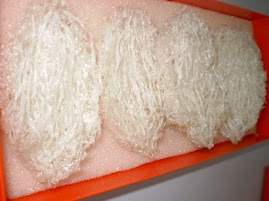

For a conventional RC structure BH, we only use concrete and steel bar as major construction materials. Structural steel (light weight steel) is normally used for factory and warehouse.
What are the advantages?
1) Faster construction. People usually opt for this method when there is an urgency to complete the project within a very short time frame and money is not an issue. After you complete the foundation (pile caps) and ground beams, you only need a few days for the stanchions & I beam erection and composite slab casting (of course we still need to pour concrete on the metal deck formwork). The framework can be done very fast if you have efficient construction management, material delivered just-in-time and deploy experienced sub-cons, skilled workers, adequate plant & machinery and advanced technology.
2) If you are able to complete faster, then you can save a lot in overhead costs (labour cost, machinery rental, supervision cost, & preliminary cost).
3) If your site is very far away from town, it can save you transportation cost (materials like steel bar, plywood, timber, sand & aggregate, cement etc can be minimised).
4) You do not need to clear a lot of space as working yard and for material storage.
5) You can save some money in foundation construction, coz the overall structure fixed self load is lighter.

However, the method also has its down sides, where:
1) We must have proper design for construction. If it is done by third class contractor without any drawing & without proper inspection carried out, I think I will lari kuatx2 if invited to visit the BH. Do you know why World Trade Centre (WTC-911, NYC) collapsed? One of the causes is due to failure of the connection/joint parts. If the jointing area is not properly done, it will affect the integrity of the building.
2) The material used is costly. I remember at the peak time last year, 1 tonne steel was RM 4k plus and as I write this, it has already dropped to RM3.3k per tonne. But even so, it is still expensive compared to concrete (which is about RM 70 per tonne) and deformed reinforcement bar (about RM 1.8k per tonne). One must consider carefully that on one hand you save the overhead & foundation costs, and on the other you have to pay higher material cost. I have given you all the facts, anyway, the choice is still yours.
3) It's very important to make sure that we employ the right sub-cons and it's crucial to hire experienced steel workers/welders to carry out the installation works. Then only you should be able to sleep sound every night.
4) Even though steel can withstand very high tensile stress, but it's weak in fire resistance. One of the good example : WTC. It failed also due to the melting of the connection areas. So, for columns, normally the engineers will do concrete encasement where bars added and cast together with concrete. This process takes time and will only be cost-effective if done in mass proportion.
5) Steel corrosion problem. We have to ensure anti-corrosion paint to be applied at certain time interval (depends on location, if near to beach, we must apply it every year)
6) If you employ structural engineer for the structural steel design, chances are he will adopt higher safety approach (ie 2 dimension instead of 3 dimension analysis), which will incur higher cost.
7) People tends to steal the balanced materials or debris or scrap steel to sell to "Keling botol", if they are left unattended at site. It is therefore not easy to control the material wastage.
The above are just my personal experience and opinions. I might be wrong also.

































No comments:
Post a Comment